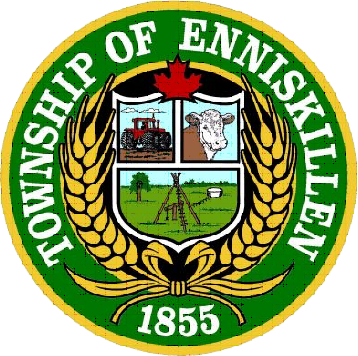In 1822, the First Nations sold the two southern concessions of the township to the Crown and then the remainder in 1827. Sir John Colborne, Lieutenant-Governor of Upper Canada (1828-1835) named the Township to honor a Peninsular War colleague of his from his native Ireland, Sir Galbraith Lowry Cole, who’s father was the Earl of Enniskillen.
The survey of Enniskillen was completed in 1833 by Eliakim Malcolm. Approximately sixty percent of the land consisted of wet swampy land to varying degrees through which travel was virtually impossible depending on the season and the amount of rainfall. Even the surveyors were unable to finish their vegetation description along the Eighth Line East, because of the mud and surface water, which was two feet deep. The swamp was largely seasonal in nature, a shallow lake in the rainy periods (water cover to the depth of from one to two feet) a dry bed in the summer, and wet clay mire the remainder of the year.
When the land survey was finished the Crown made the Township available for settlers. Many of the lots were granted to British soliders who had served in the war of 1812 and to sons and daughters of United Empire Loyalists. In most cases the grants were not taken up because of the inland location and the forbidding surface of the Great Enniskillen Swamp was not conducive for settlement. The 1830’s records indicate that the Rouse, Eveland, Durance and Oliver families deserve the recognition as Enniskillen’s pioneer settlers. In 1851, the population was 238, Enniskillen had too few people to justify a municipal council until 1855.
